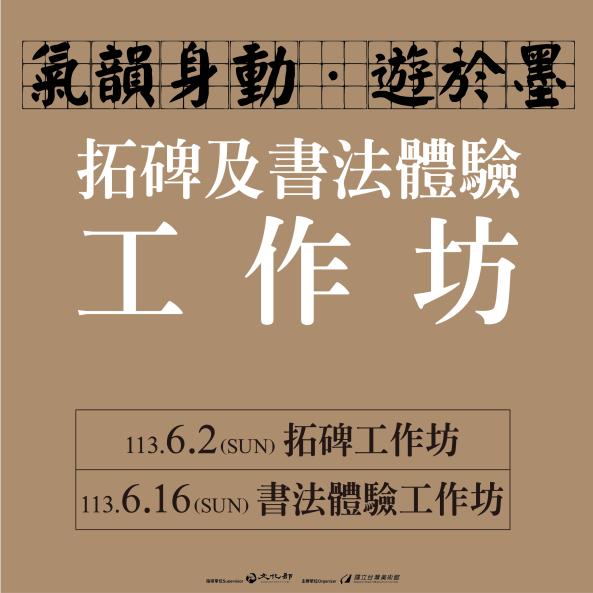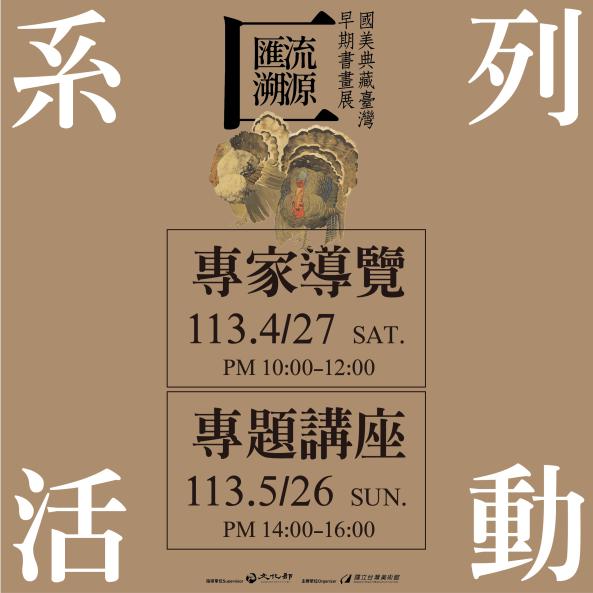| Number of Sessions | Venue |
|---|---|
|
2024/03/30-2024/7/7
|
|
-
 Organizer
:
National Taiwan Museum of Fine Arts
Organizer
:
National Taiwan Museum of Fine Arts
-
 Available Services
:
語音導覽
Available Services
:
語音導覽
Taiwan, an offshore island surrounded by the ocean on all sides, is located in the southeastern corner of Eurasia. Since the beginning of the 16th century, when Western European colonizers expanded into Asia, Taiwan became one of the earliest East Asian colonies occupied by Western European colonial powers and also one of the earliest islands where Western culture was introduced. The origins of early Taiwanese art can be categorized according to patterns of culture and divided into the following three periods: The Dutch and Spanish period (1624-1662), the Ming and Qing period (1662-1895), and the Japanese colonial period (1895-1945).
Based on the records available, paintings from when Taiwan was under Dutch and Spanish rule mainly consisted of maps, scenic images, and book illustrations depicting historical facts of Taiwan, but these art forms did not take root in Taiwan. However, from the Ming-Zheng period to the Qing dynasty’s rule and then the Japanese occupation which concluded at the end of World War II, Taiwan’s cultural landscape underwent drastic changes over close to three centuries. During the Ming and Qing period, with the influx of Chinese culture and art, the genre of traditional Chinese painting and calligraphy became the mainstay of Taiwanese art, which completely changed Taiwan’s cultural constitution and gradually led to the development of a Taiwanese regional painting style that was derived from the Min-Fujian art practice. During the Japanese colonial period, Japanese culture and art were actively borrowing and referencing new Western philosophical trends, and the colonial government’s assertive actions had a profound impact on the culture and art scene in Taiwan. The refined and elegant Japanese style was introduced to Taiwan from the Japanese art circle, which replaced the Min-Fujian style and became predominant in Taiwan.
The principle of “learning from the past to envision the future” is adapted for the organization of the development of painting and calligraphy in Taiwan over this span of three centuries. Professor Huang Tung-Fu is commissioned by the museum to concentrate on the early Taiwanese calligraphy works and paintings from the Ming and Qing period to the Japanese colonial period that are in the museum’s collection, and through studies done on the collection and the selection of specific artworks, a total of 147 select artworks are exhibited under the two medium-oriented themes of “Early Taiwanese Calligraphy” and “Early Taiwanese Paintings, ” with an important system of Taiwanese art that spans the Ming and Qing period to the Japanese colonial period, which was circa 1640 to 1945, constructed.
Since the inauguration of the National Taiwan Museum of Fine Arts (NTMoFA) in 1988, the museum has continued to collect artworks of zeitgeist significance from the Ming and Qing dynasties to early modern, modern, and contemporary eras, with over 17,000 pieces of such artworks currently in the museum’s collection. In particular, the artworks from the Ming and Qing period to the Japanese colonial period are particularly substantial and well-organized. In addition to presenting a context of Taiwanese art history based on a spatiotemporal framework, this exhibition further aims to construct a more comprehensive picture of the notable features found throughout Taiwanese art history and the rich aesthetics and social connotations that hold close regional connections. Moreover, results from the project, “Reconstructing the History of Art in Taiwan,” launched by the Ministry of Culture are also integrated and presented, to serve as a witness to the interim accomplishment made on the construction of Taiwan’s cultural subjectivity.
<This exhibition is a part of the Ministry of Culture’s Project of Reconstructing the History of Art in Taiwan>
| Attachment(s) | Description of Attachment(s) |
|---|---|
| 展覽手冊 Exhibition Brochure | 展覽手冊 Exhibition Brochure |


